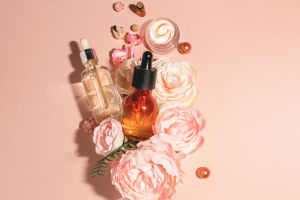The origin of the word "Perfume"
The term "perfume" originates from the Latin phrase "per fumum," meaning "through smoke."
Romans and Arabs perfected the art of creating and using perfume over 2,500 years ago.
Perfume in ancient times
Emperor Nero would host extravagant feasts with rose and jasmine oils flowing through fountains and wafting through the air. The Arabian tradition of Bakhoor, which involves burning incense and precious wood to perfume clothing and surroundings, remains prevalent today.
2. What was the first perfume?
The earliest known perfume maker
While the first perfume is not definitively known, the world's first recorded chemist and perfume maker was Tapputi, a woman from Babylonian Mesopotamia around 1200 BCE. She pioneered scent extraction techniques that form the basis of modern perfumery.
Early perfume production
The first dedicated factory for producing perfumed oils dates back 4,000 years on the island of Cyprus. Egyptians integrated perfumes into their culture 3,000 years ago, crafting stone and glass vessels to hold their precious scented oils.
3. Can perfume be an aphrodisiac?
The allure of perfumes
Perfume can undoubtedly enhance sensuality. Ingredients like Jasmine, Ylang Ylang, Vanilla, and Ginger are known for their aphrodisiac properties. Cleopatra famously used the captivating power of Jasmine to charm Mark Antony.
4. Perfume changes throughout the day – why?
The evolution of fragrance
Perfume's scent changes due to its composition of top, heart, and base notes.
Top notes: Light and fleeting.
Heart notes: Herbal, floral, or spicy, lasting longer.
Base notes: Deep scents like wood, amber, or musk, lingering the longest.
The chemistry of the wearer’s skin also influences this transformation.
5. Does perfume have an expiry date?
The lifespan of perfumes
Perfumes can change over time, and it’s best to use them within 3–5 years. Once exposed to air, they should be used within three years.
Longevity factors
Perfumes with higher concentrations or heavier base notes tend to last longer both in the bottle and on the skin.
6. How to store perfume?
Tips for proper storage
Humidity, sunlight, and temperature fluctuations can affect perfume quality. Store bottles upright in a dark, cool place away from moisture—avoid bathrooms and cars.
7. What is the difference between Eau de Parfum and Parfum?
Perfume concentration levels
Concentration refers to the percentage of pure perfume oil in a fragrance.
Eau de Toilette: ~10% perfume oil.
Eau de Parfum: ~15% perfume oil.
Parfum: Over 20% perfume oil, lasting 8–12 hours on the skin.
8. Is perfume a mood booster?
The emotional effects of perfumes
Perfume can uplift your mood, boost confidence, and evoke special memories. Citrus fragrances, in particular, are known for their energizing and refreshing properties.
9. Why does perfume smell different on skin?
The role of individual chemistry
Skin pH, lifestyle habits, and personal activities like diet, smoking, or exercise can alter how a perfume smells. Changes in lifestyle might also explain shifts in how your favorite fragrance smells on your skin.
10. What is the difference between a splash bottle and an atomizer?
Application methods
An atomizer is a spray pump, while a splash bottle lacks one. Splash bottles are common for aftershaves, and some pure perfume oils come in applicator-equipped crystal bottles.
11. How to apply perfume?
Maximizing perfume effectiveness
Apply perfume to pulse points like wrists, neck, behind ears, elbows, and knees, where body heat activates the scent. Avoid rubbing wrists together, as this alters the fragrance molecules.
Hair application tips
Perfume can be applied to hair using a brush spritzed with the scent, as direct spraying may dry out the hair due to alcohol content.
12. Are perfumes vegan?
Animal-derived ingredients
Many perfumes contain animal-derived ingredients. Check labels to ensure a perfume is vegan-friendly.
13. What are unisex perfumes?
The flexibility of fragrances
All perfumes can be considered unisex, as scent preferences are personal. A floral scent isn’t exclusively feminine, nor is a fragrance solely masculine. Wearers can choose based on their style and preferences.


